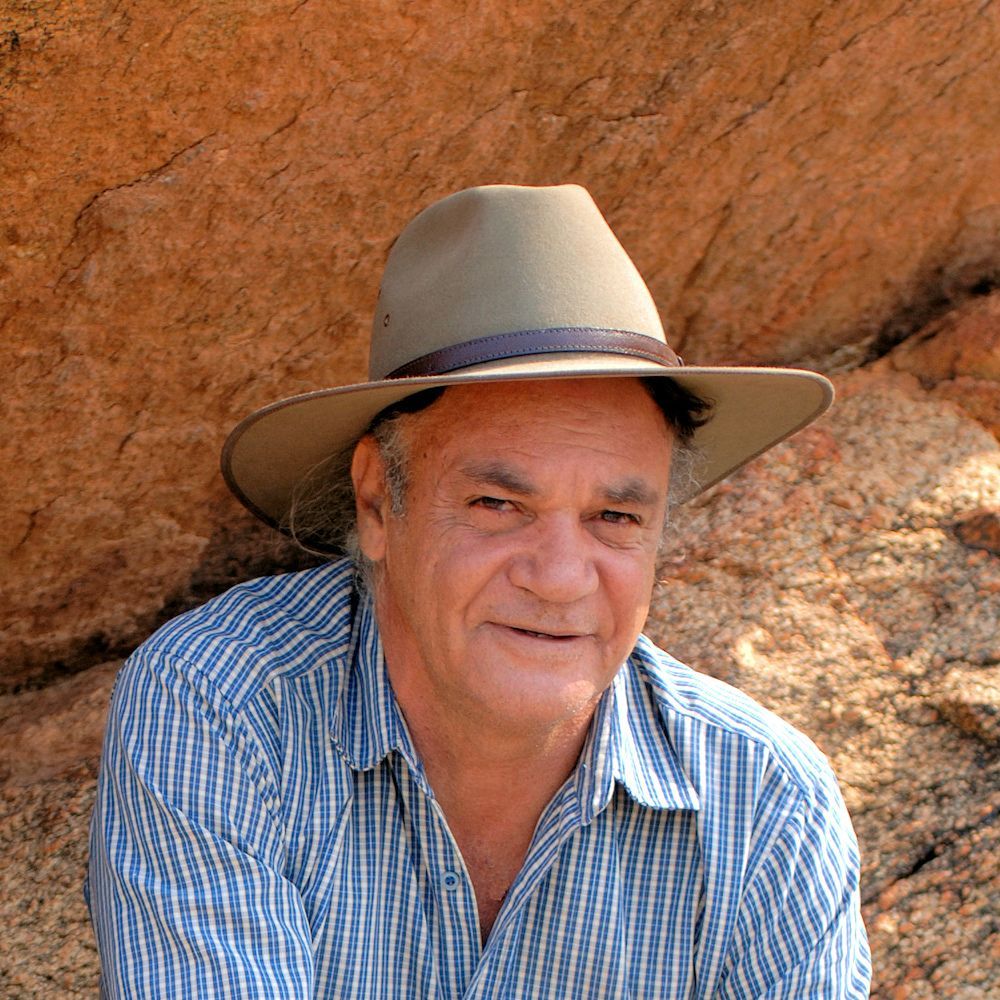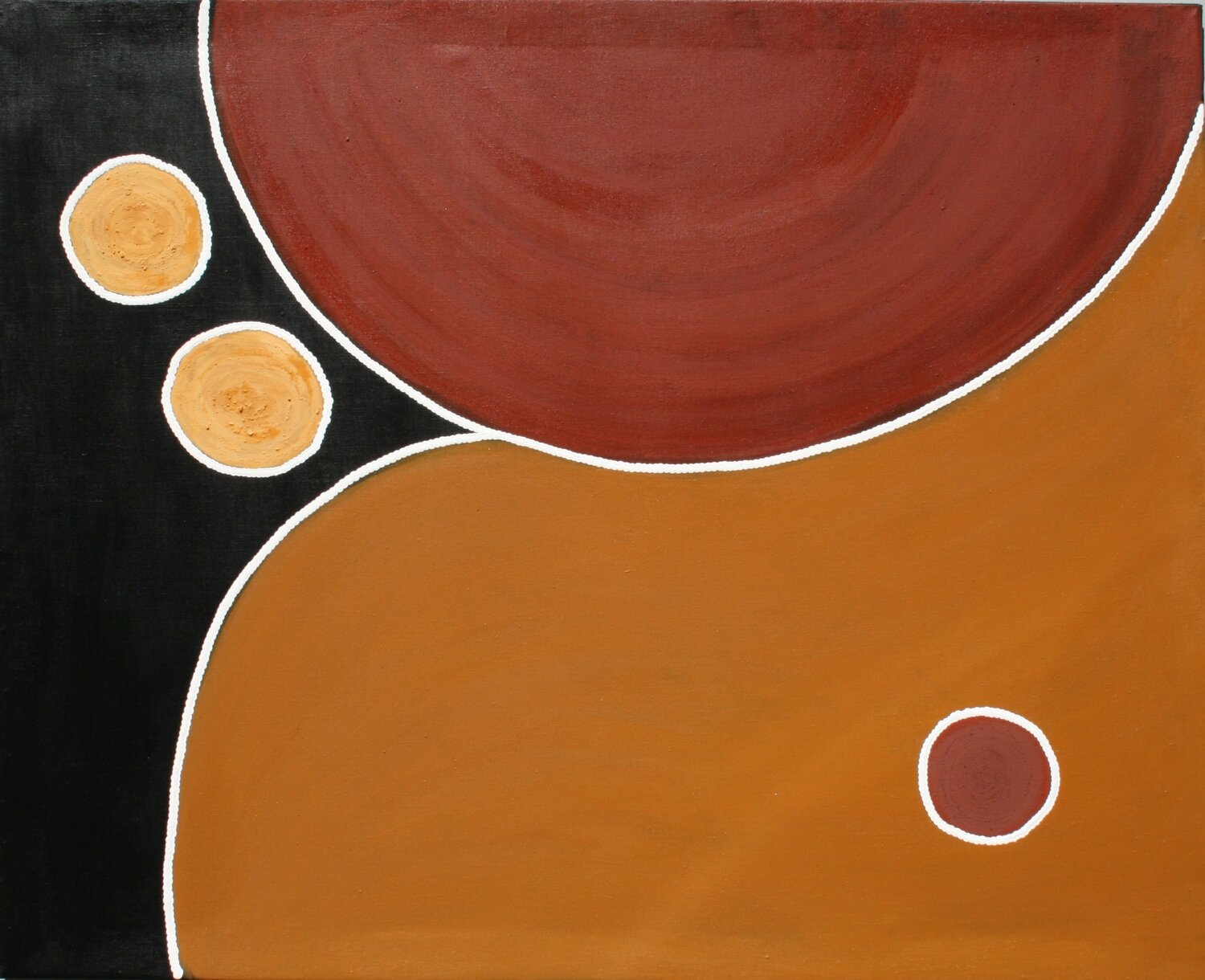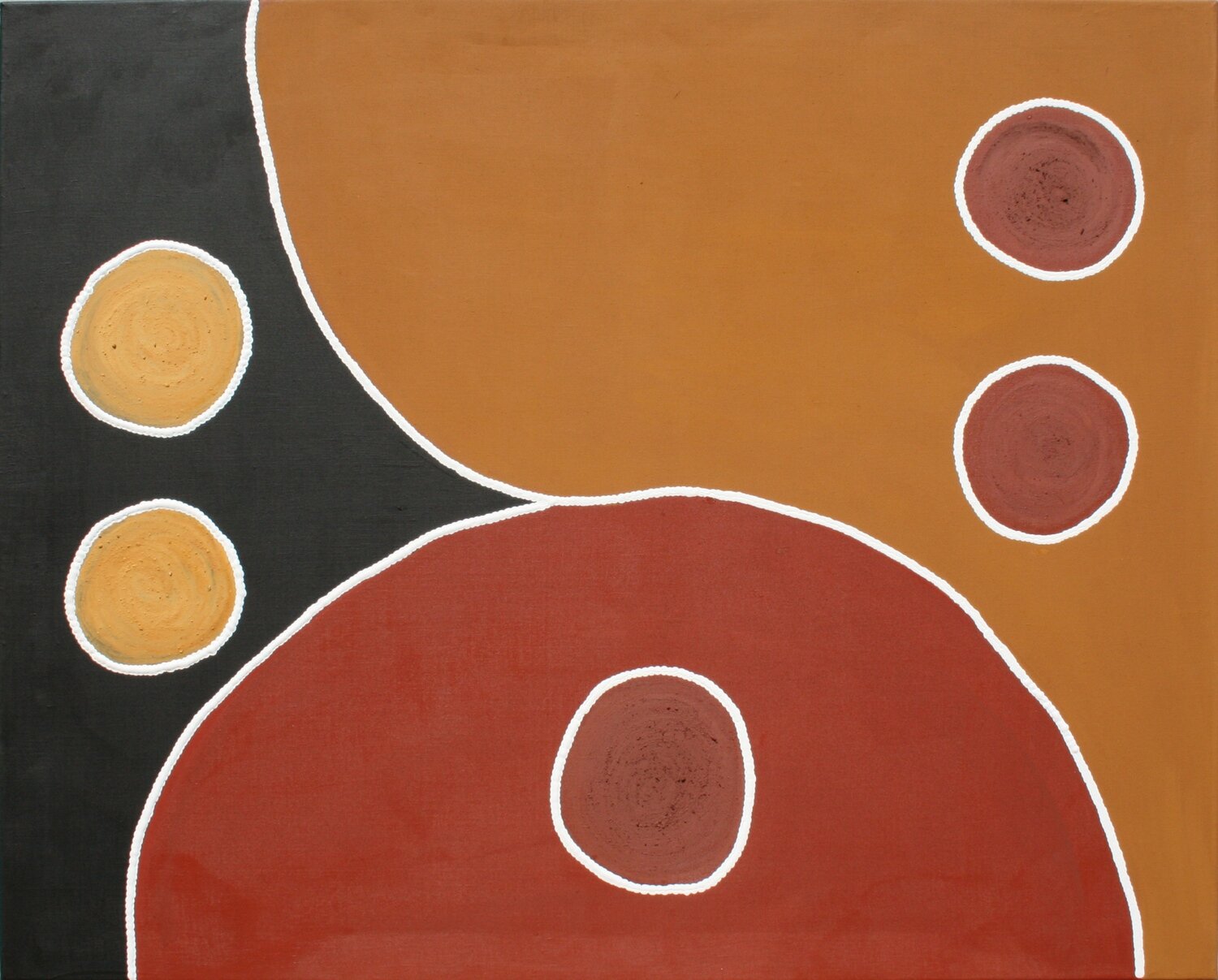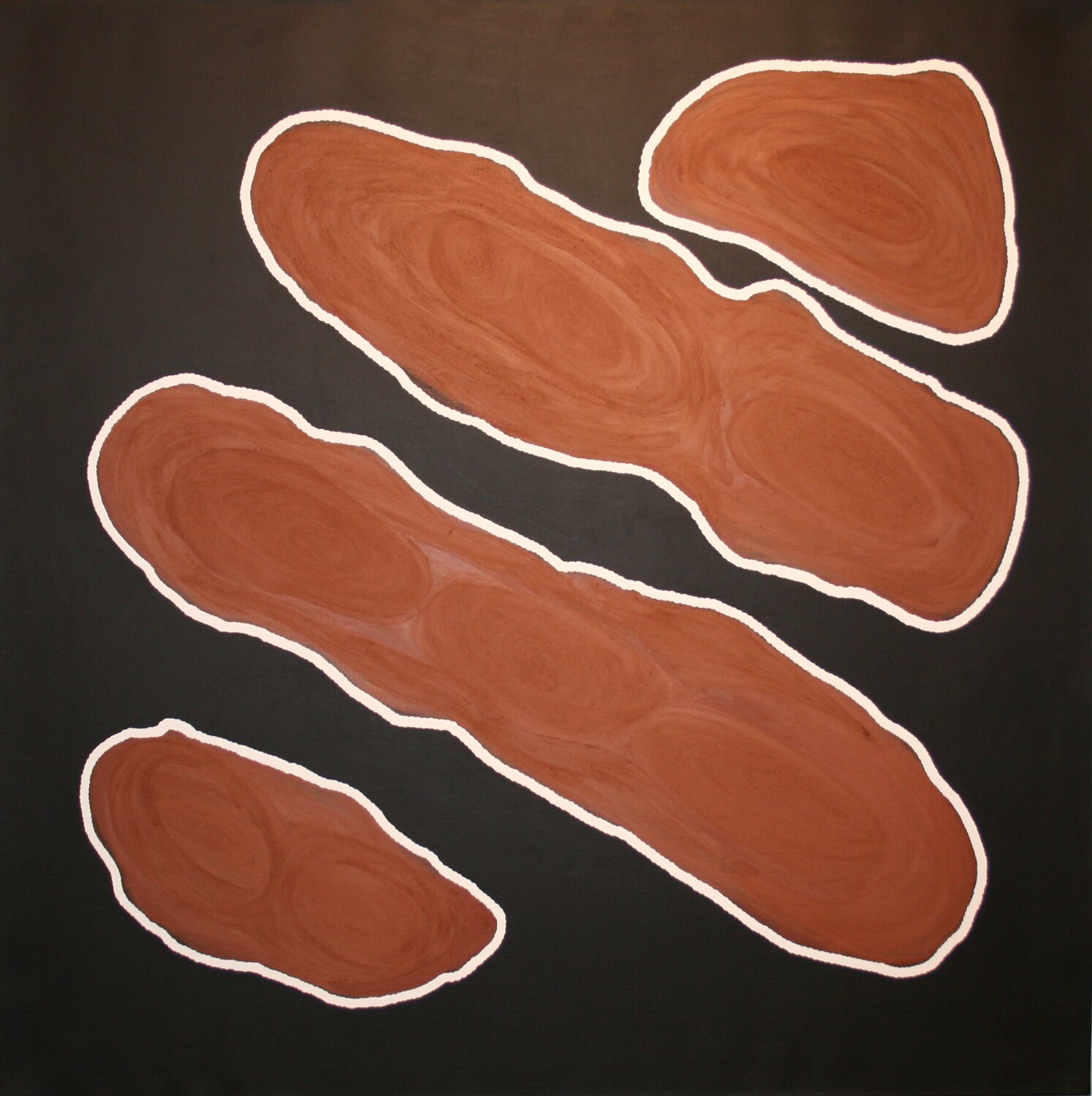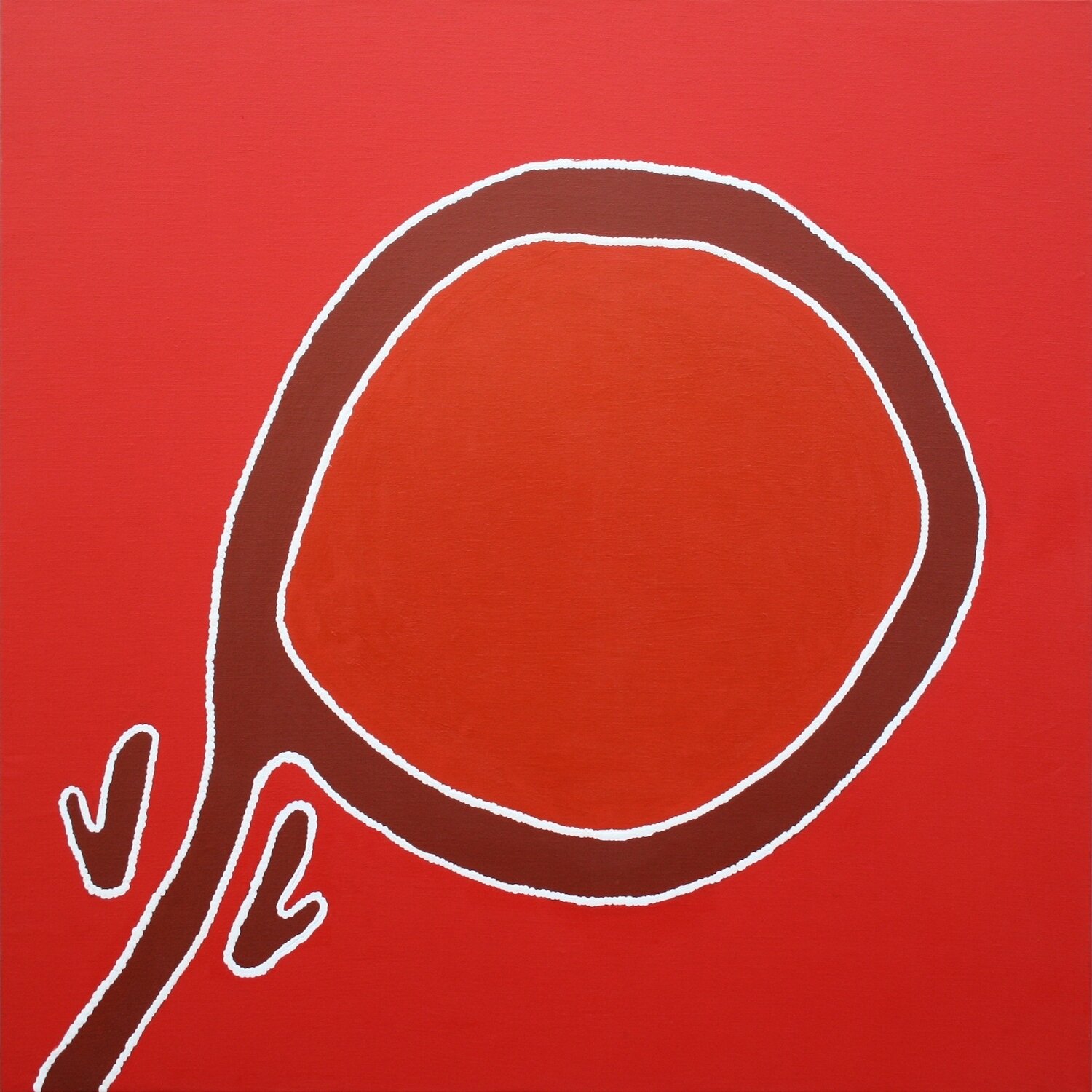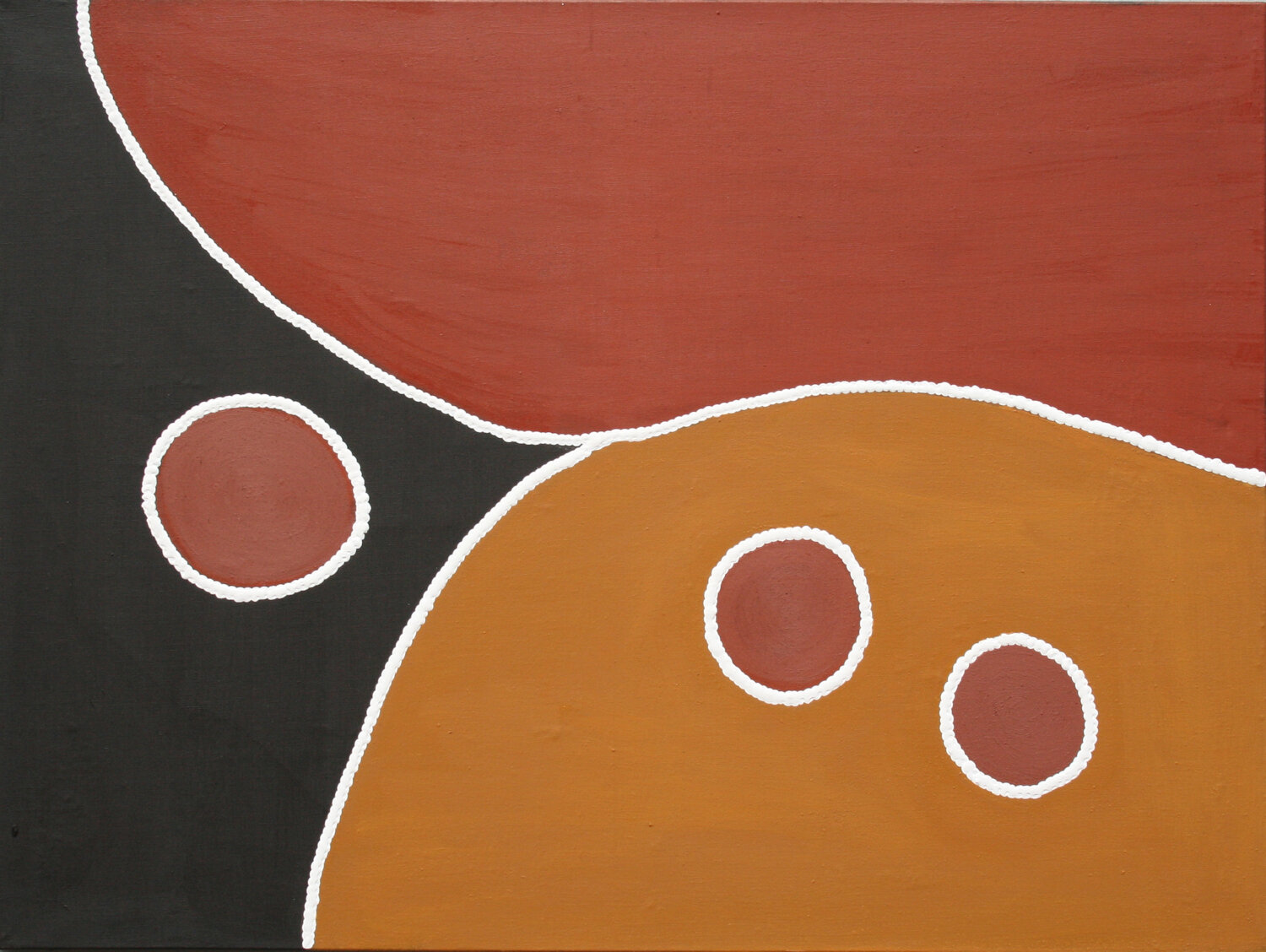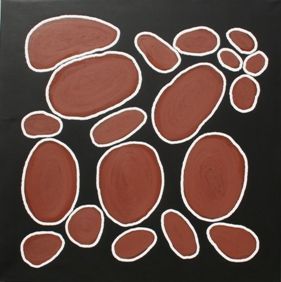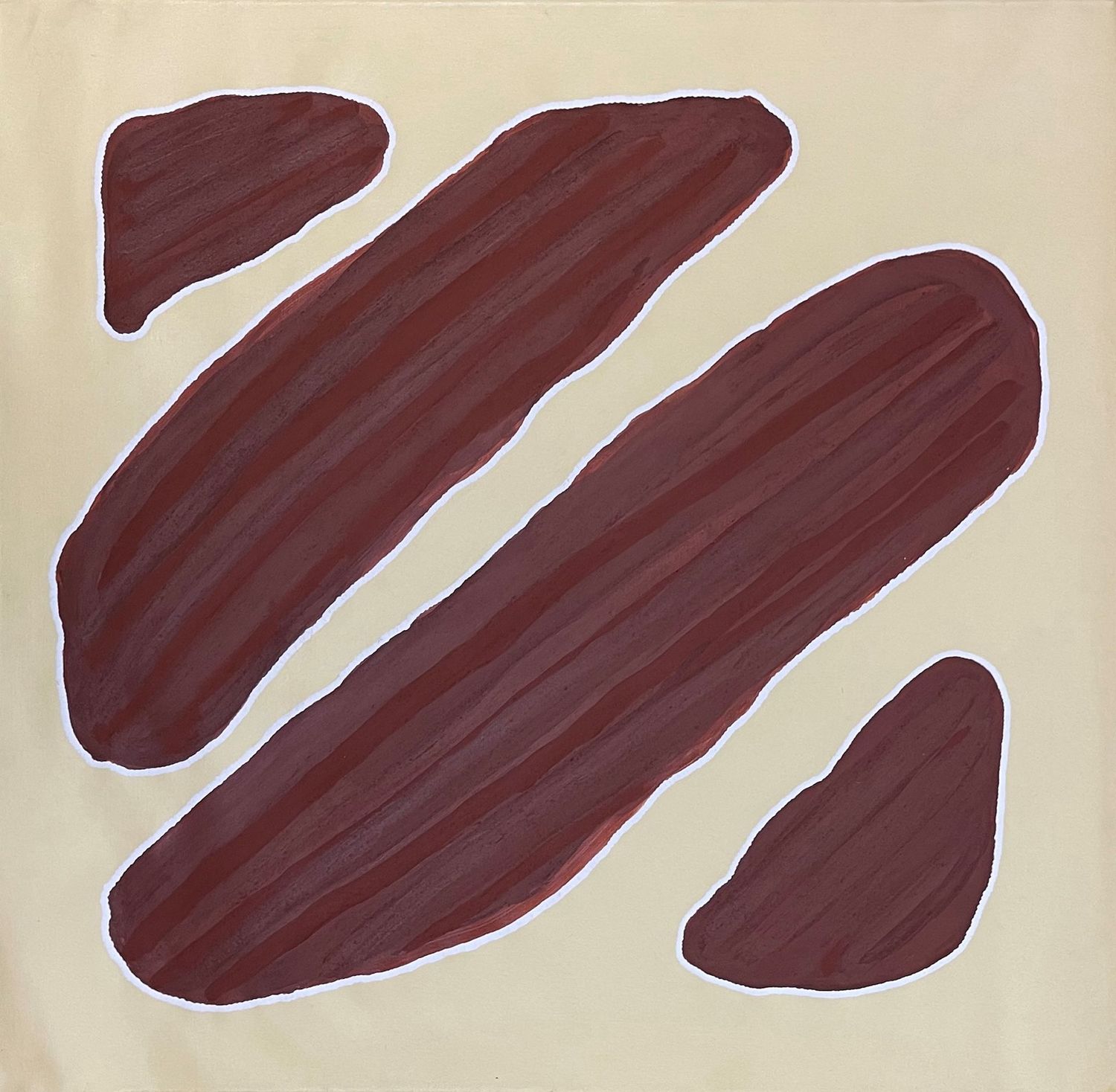Vincent Forrester Muntjantji is a Luritja/Aranda man born in Alice Springs (one of his grandfathers was Scottish). Vincent grew up on a cattle station (Angus Downs) in a traditional environment, where he was influenced by his forefathers. His grandparents taught him about the sacred legends associated with his country, as well as about bush foods and bush medicine. He went through initiation on maturity. Today, he is well known and respected as an artist, activist and community leader.
In his youth, Vincent worked as a station-hand and stockman. Later he worked in an abattoir, before serving in the army in Townsville for three years.
Today, Vincent still practices his responsibilities and rituals and now takes his place as a teacher of traditional law to young men.
A visionary, Vincent was instrumental in setting up Central Land Council, Central Australian Aboriginal Congress, Aboriginal Legal Services, Central Australian Aboriginal Media Association (CAAMA) and its television station Imparja.
Growing up as a stockman and station hand, Vincent came to know his country intimately. His grandfather’s showed him the landscape and told him the stories, associated with his country and Alice Springs, where he became the Aboriginal historian of the area. His grandmother’s showed him bush foods and bush medicine for both Luritja and Aranda country. It was in his teens when working as a cattleman, that the tourism industry was in its infancy and Vincent began working as a tour guide. He later became a very popular guide at Kings Canyon, a ranger at Uluru/Kata Juta National Park and later a specialist guide at Alice Springs Desert Park.
He was also heavily involved in Territory and National politics, as the chairman of the National Aboriginal Conference (the precursor to Aboriginal and Torres Strait Islander Commission) where he worked as an Indigenous advisor to three Australian Prime Ministers - Gough Whitlam, Malcolm Fraser and Bob Hawke - was a founding member of the Makarrata treaty committee (under the Fraser Government), the Australian member for the World Council of Indigenous Peoples in Geneva, worked with UNFSCO in Paris for the return of sacred objects to traditional Australian Indigenous owners.
With Vincent’s spiritual connection to the land, his identity as a story teller and tour guide, served him in good stead when he began painting in the early 1990s. Vincent was inspired by great artists such as Rover Thomas from the Kimberley region of Western Australia.
Vincent paints stories from the Dreaming. He has said that his art represents a story and a “spiritual legacy” for his descendants. Originally, he used acrylic paints, then used ochres from Kata Juta area that was collected by his aunties who are landowners and have the right to such sacred stones. Using traditional methods, tools and techniques, Vincent grinds natural pigments into powder form, and then mixed with a binder to become a thick, sticky paint. The colours Forrester uses in his paintings are the traditional colours used for ceremonial body paint.
His painting Resurrection at Mutitujulu Waterhole, was done using these methods and was chosen as a finalist for the Togart Contemporary Art Award in 2012. The artwork depicts the waterhole at Uluṟu, and the story of Wanampi (Rainbow Serpent). It was part of a series dedicated to women.

